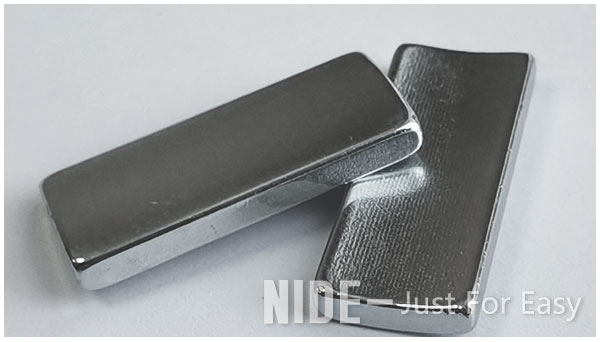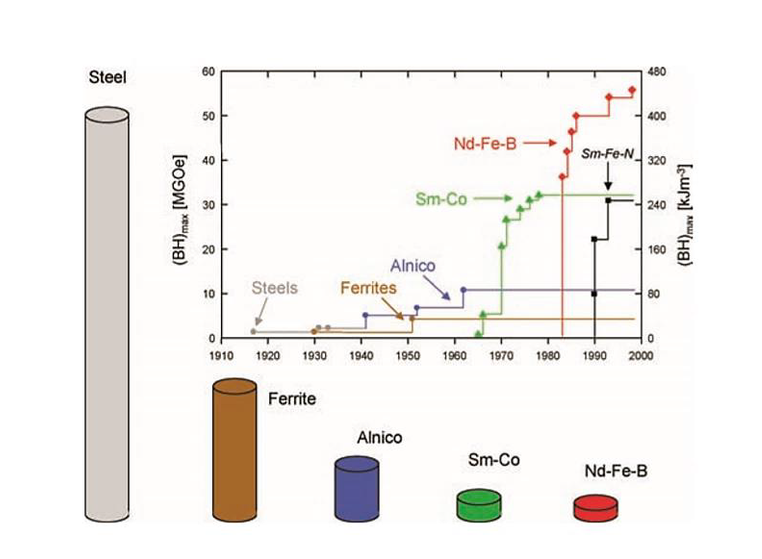The history of rare earth permanent magnets for motors
2022-05-31
The earliest permanent magnets discovered were minerals that provided a stable magnetic field. Until the early 19th century, magnets were fragile, unstable, and made of carbon steel. In 1917, Japan discovered cobalt magnet steel, which made improvements. The performance of permanent magnets has continued to improve since their discovery. For Alnicos (Al/Ni/Co alloys) in the 1930s, this evolution was manifested in the maximum number of increased energy product (BH)max, which greatly improved the quality factor of permanent magnets, and for a given volume of magnets, the maximum energy density could be Converted to power that can be used in machines using magnets.
The first ferrite magnet was accidentally discovered in 1950 in the physics laboratory belonging to Philips Industrial Research in the Netherlands. An assistant synthesized it by mistake - he was supposed to prepare another sample to study as a semiconductor material. It was found that it was actually magnetic, so it was passed on to the magnetic research team. Due to its good performance as a magnet and lower production cost. As such, it was a Philips-developed product that marked the beginning of a rapid increase in the use of permanent magnets.
In the 1960s, the first rare earth magnets(rare earth permanent magnets) were made from alloys of the lanthanide element, yttrium. They are the strongest permanent magnets with high saturation magnetization and good resistance to demagnetization. Although they are expensive, fragile and inefficient at high temperatures, they are starting to dominate the market as their applications become more relevant. Ownership of personal computers became widespread in the 1980s, which meant high demand for permanent magnets for hard drives.

Alloys such as samarium-cobalt were developed in the mid-1960s with the first generation of transition metals and rare earths, and in the late 1970s, the price of cobalt rose severely due to unstable supplies in Congo. At that time, the highest samarium-cobalt permanent magnets (BH)max was the highest and the research community had to replace these magnets. A few years later, in 1984, the development of permanent magnets based on Nd-Fe-B was first proposed by Sagawa et al. Using powder metallurgy technology at Sumitomo Special Metals, using the melt spinning process from General Motors. As shown in the figure below, (BH)max has improved over nearly a century, starting at ≈1 MGOe for steel and reaching about 56 MGOe for NdFeB magnets over the past 20 years.

Sustainability in industrial processes has recently become a priority, and rare earth elements, which have been recognized by countries as key raw materials due to their high supply risk and economic importance, have opened up areas for research into new rare earth-free permanent magnets. One possible research direction is to look back at the earliest developed permanent magnets, ferrite magnets, and study them further using all the new tools and methods available in recent decades. Several organizations are now working on new research projects that hope to replace rare-earth magnets with greener, more efficient alternatives.

